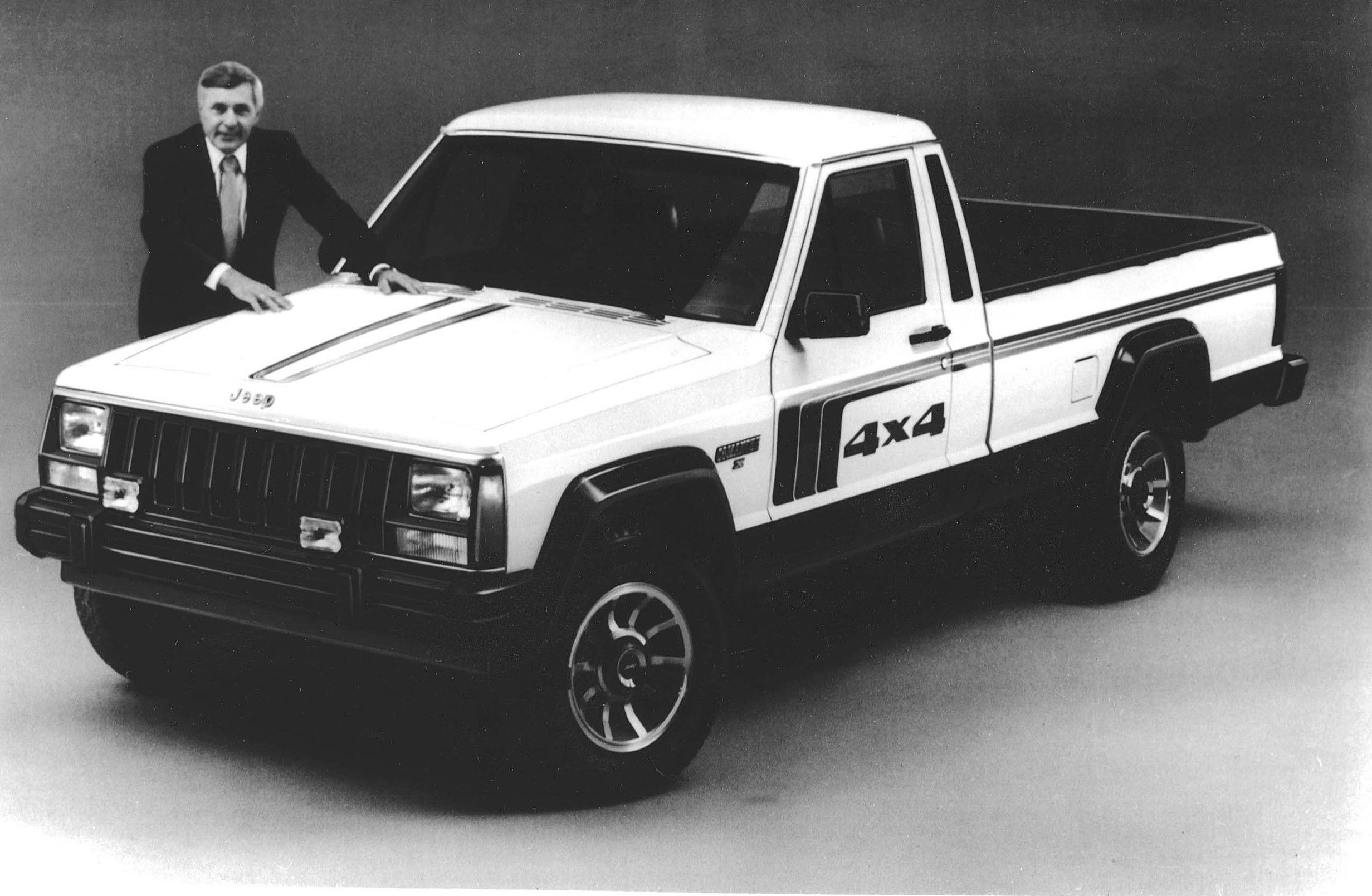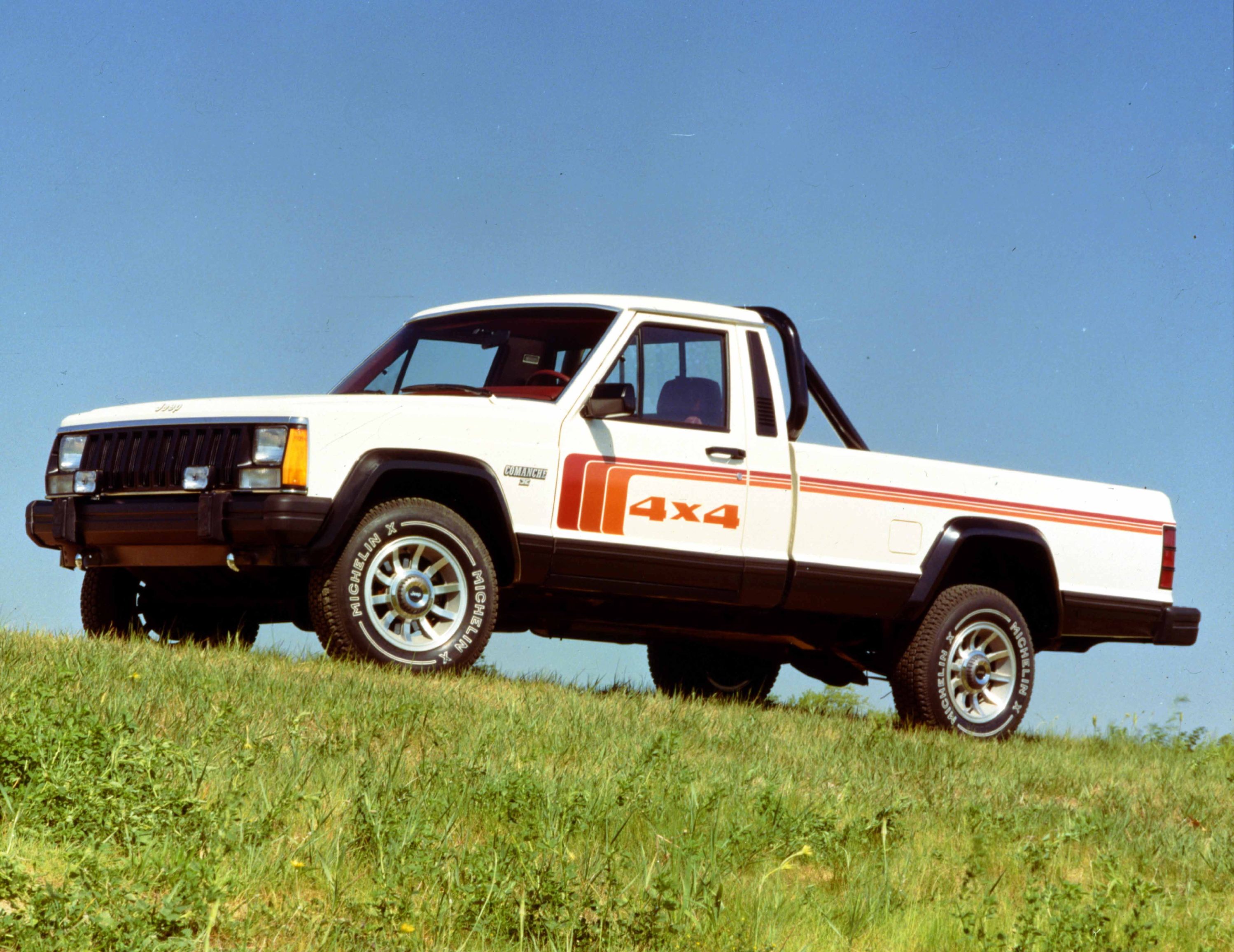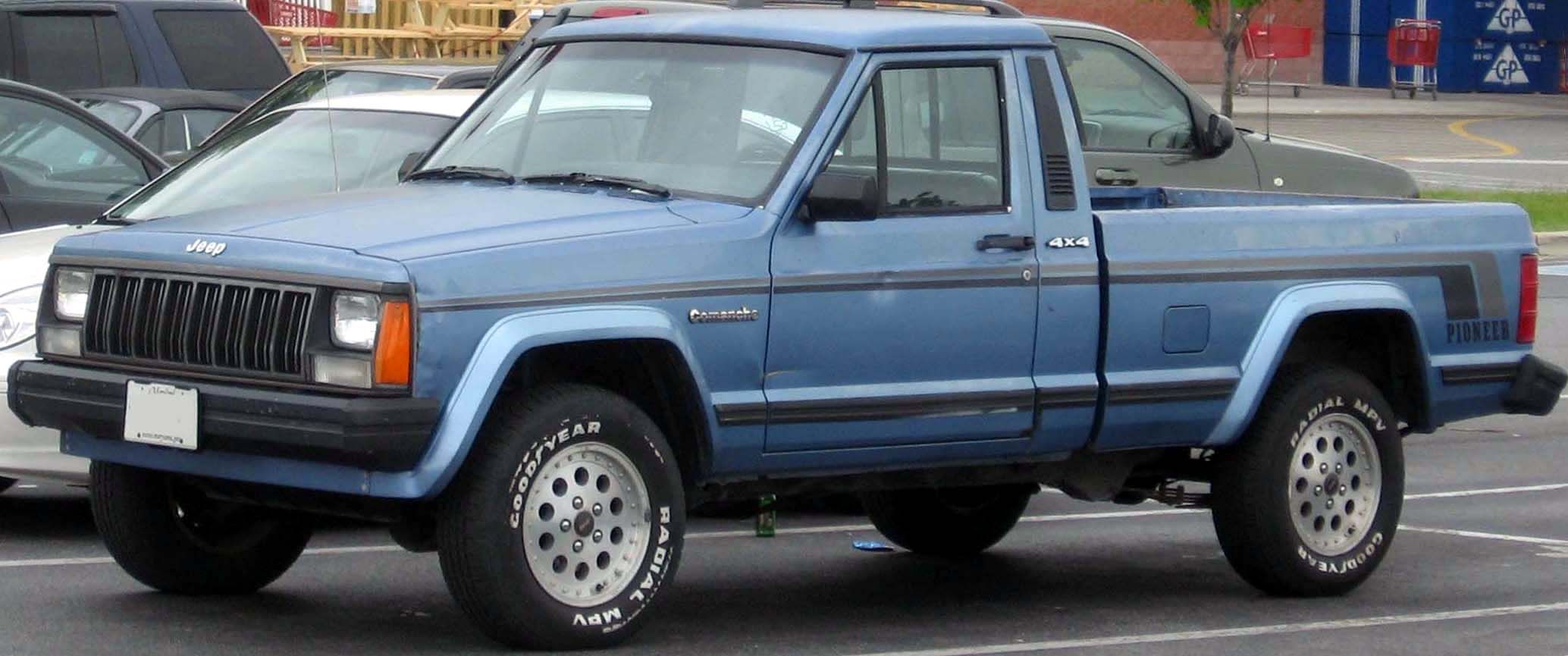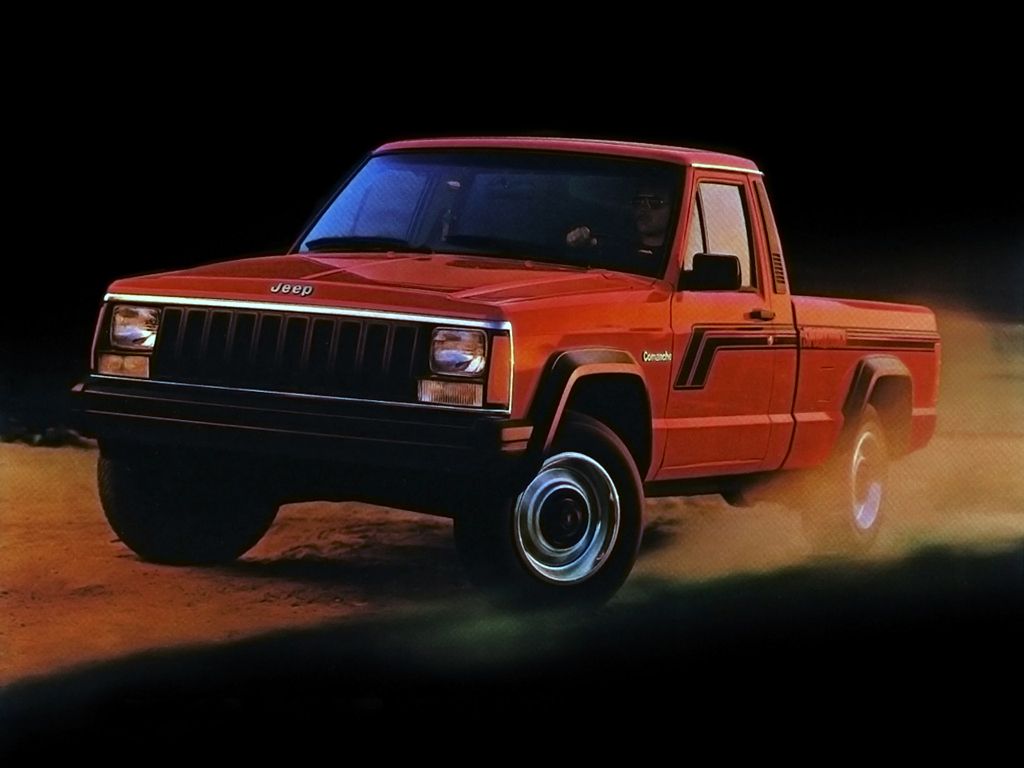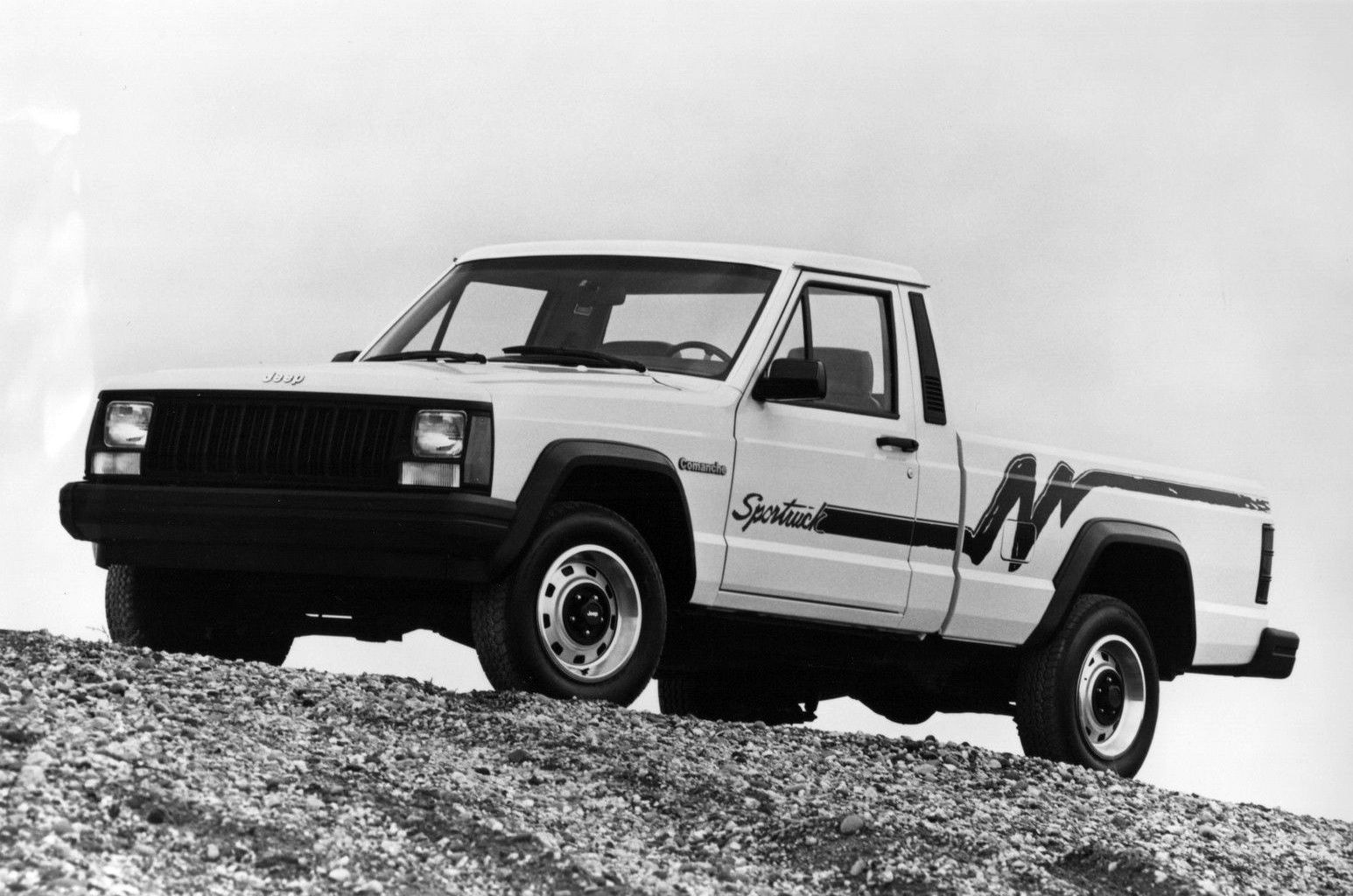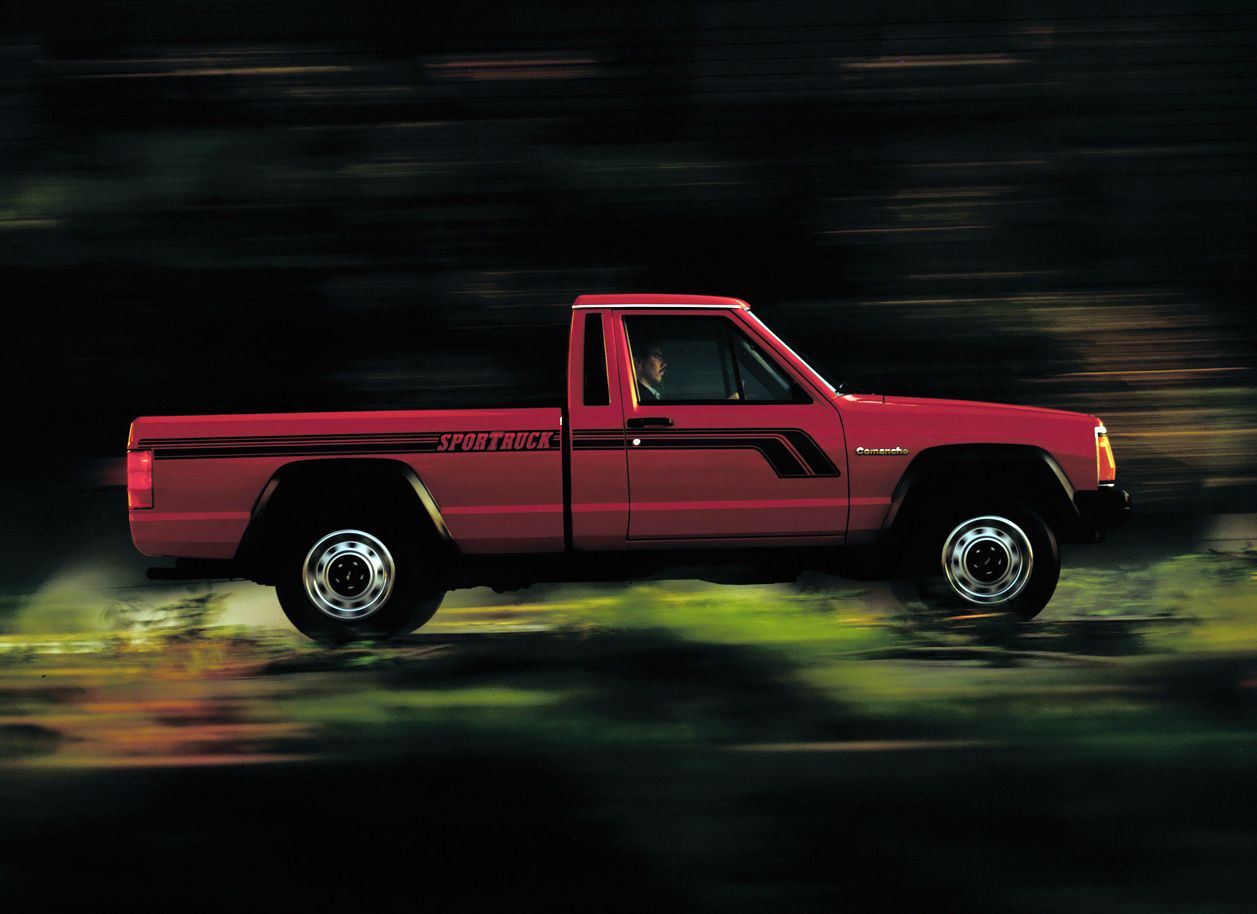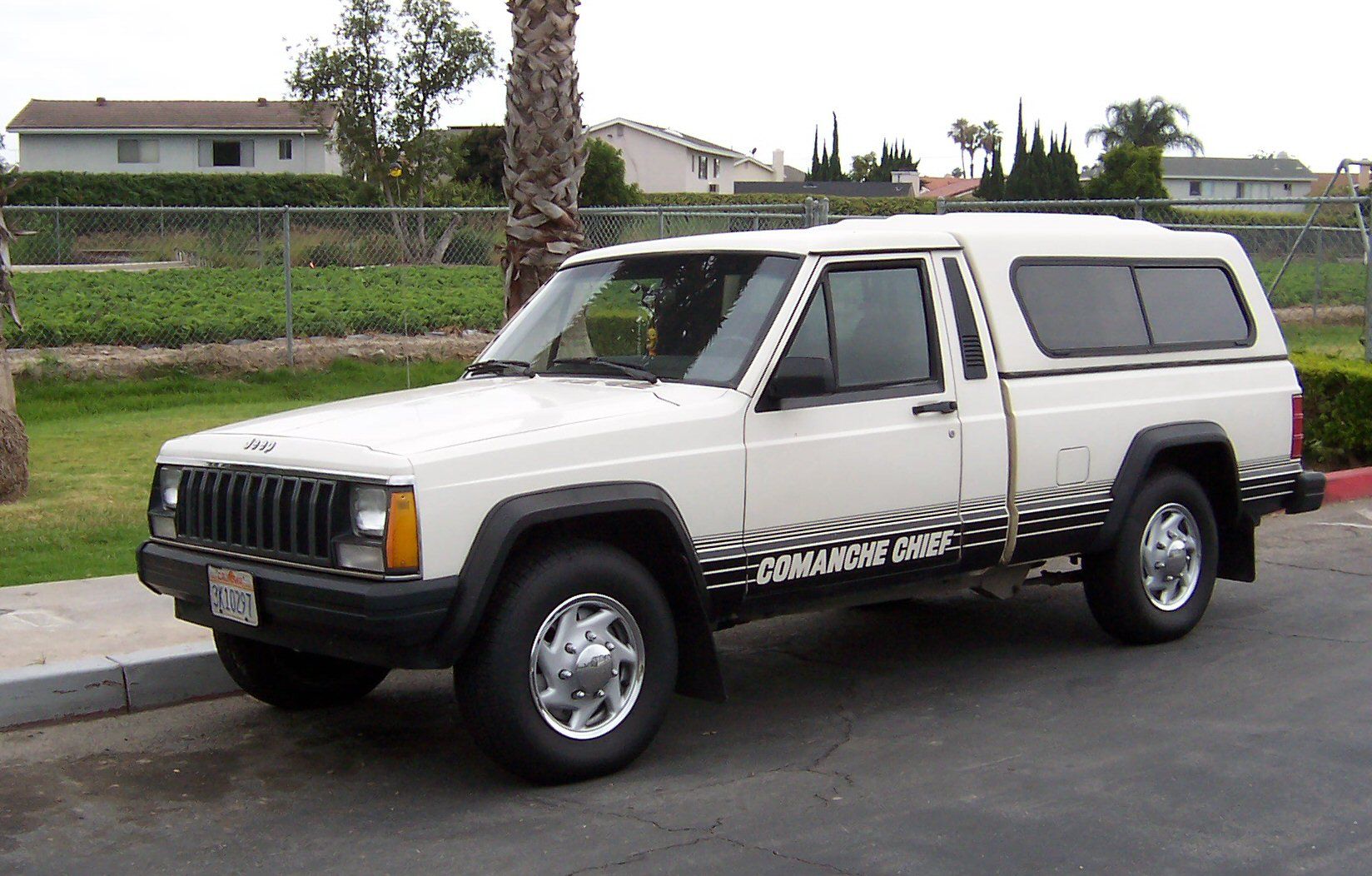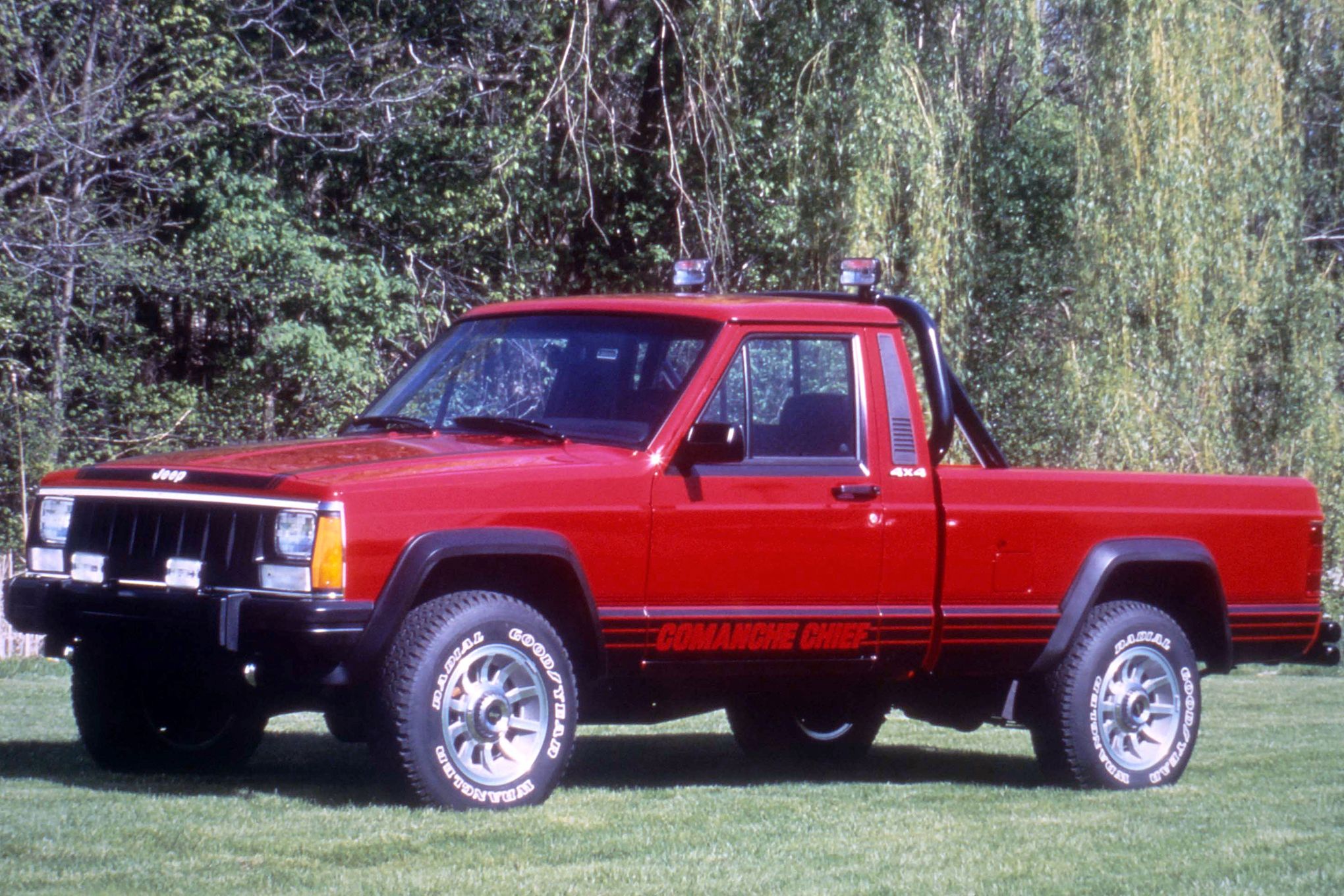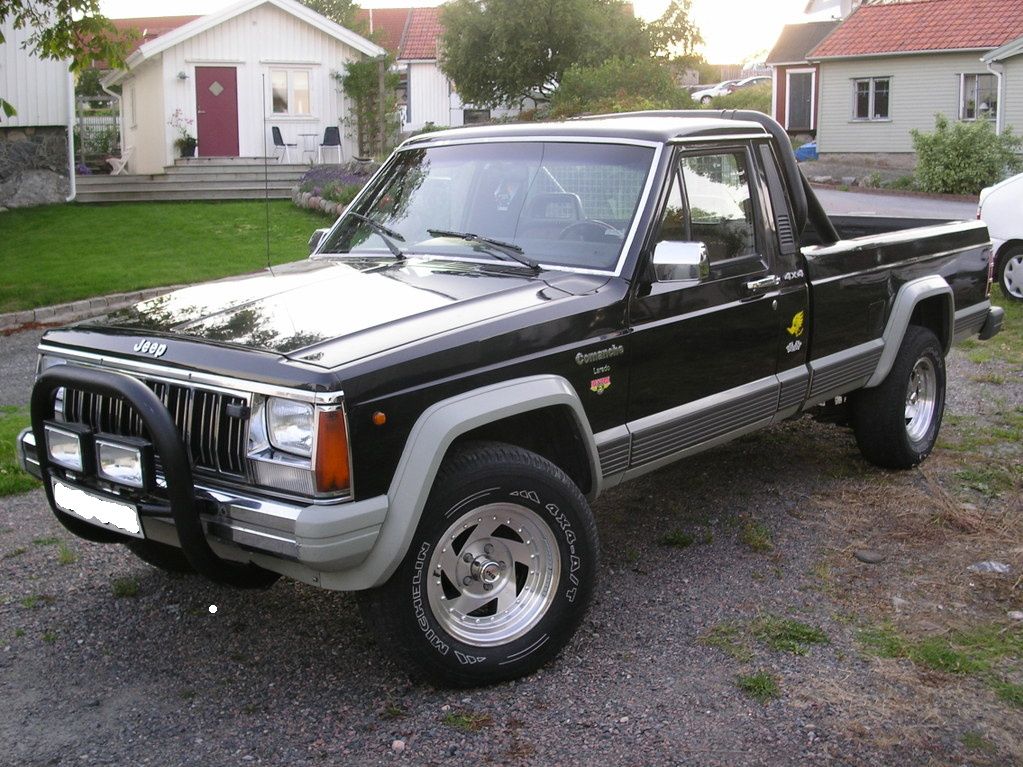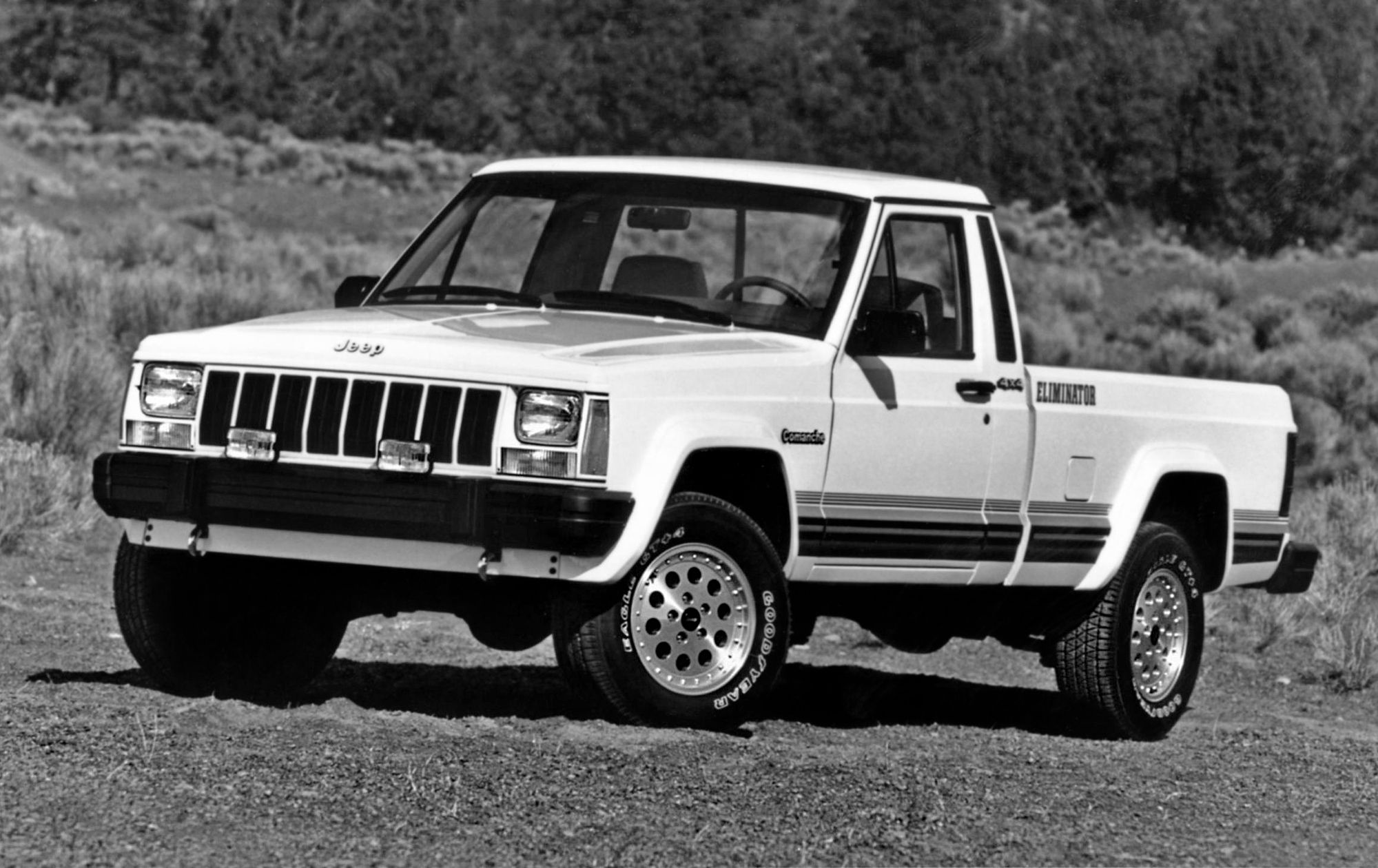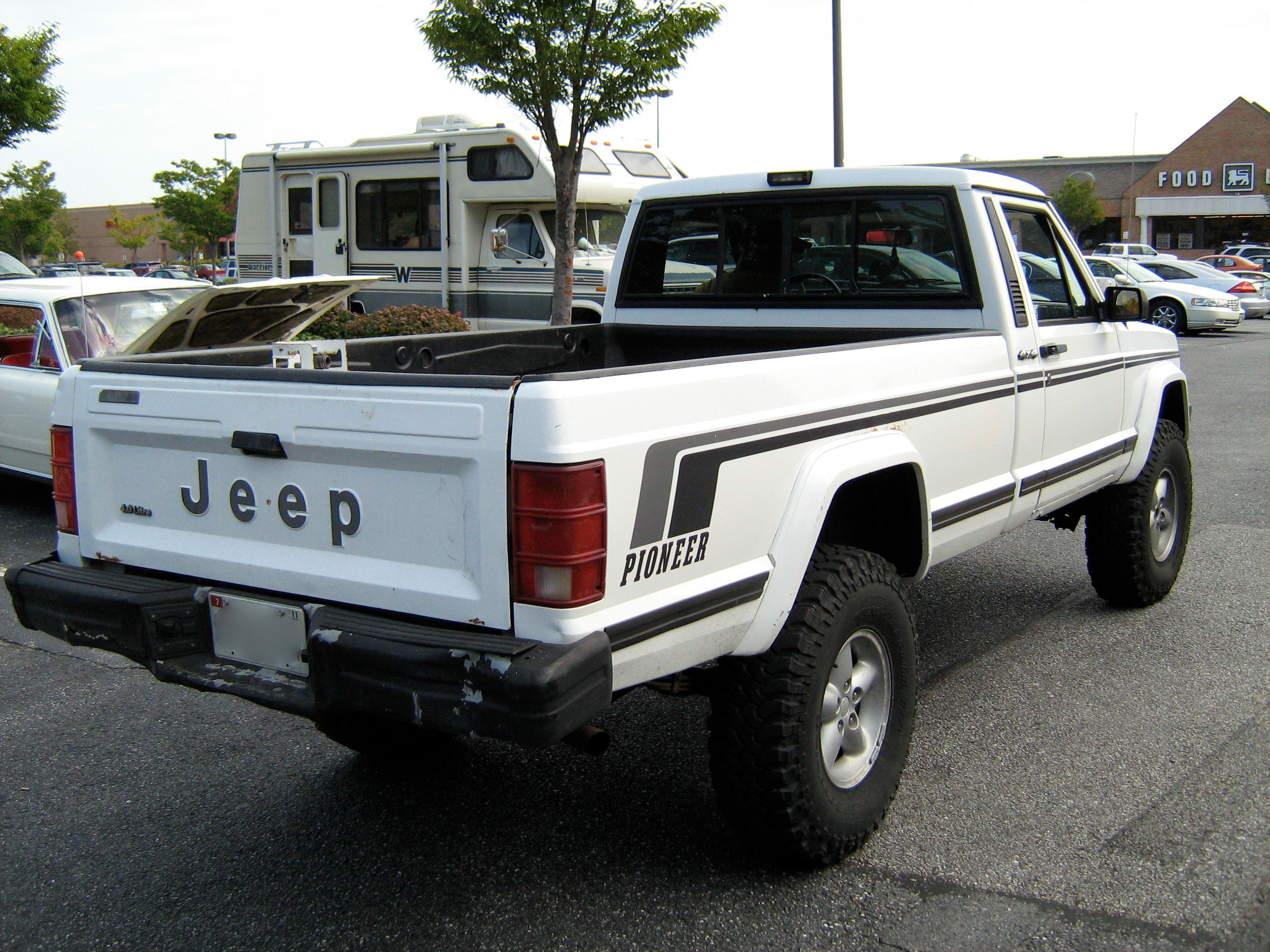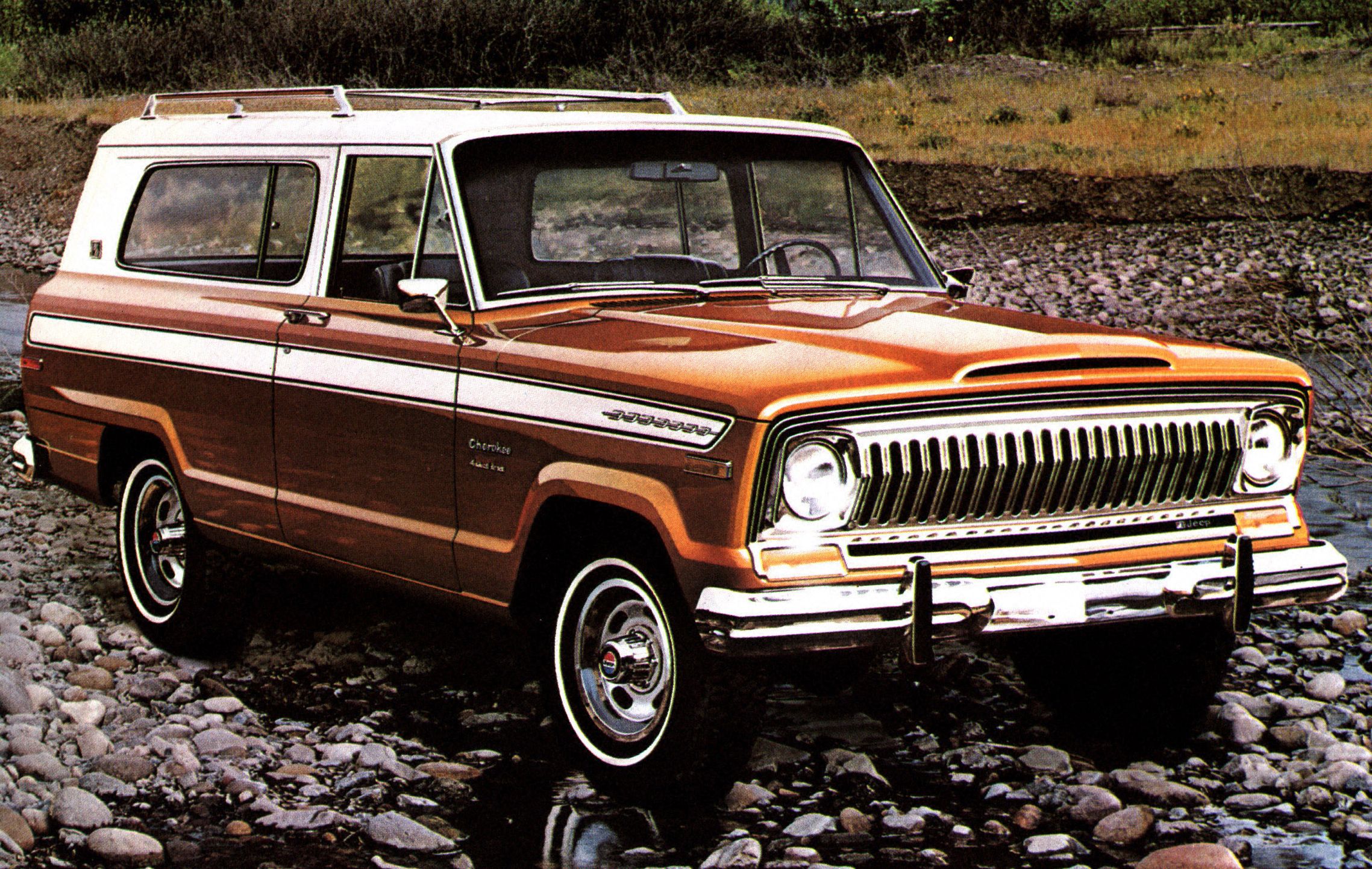The Jeep Comanche was a compact pickup truck that American Motors Corporation (AMC) introduced in 1985. Based on the XJ-generation Cherokee, the Comanche was produced until 1992. Production of the small pickup truck moved under the Chrysler Corporation in 1987, when the giant purchased AMC.
A spiritual successor to the Jeep Scrambler, the Comanche was the brand's last pickup truck until the Gladiator was revived in 2019. Despite not being as iconic as other Jeep models, the Comanche is slowly but surely becoming a classic. Prices have gone up in recent years as this compact truck is as rare as a Ferrari. Here's a few things you did not know about the Jeep Comanche.
1992 Everything You Didn't Know About The Jeep Comanche
- Make: Array
- Model: 1992 Everything You Didn't Know About The Jeep Comanche
- Horsepower: 829
- Torque: 774
2020 Everything You Didn't Know About The Jeep Comanche
- Make: Array
- Model: 2020 Everything You Didn't Know About The Jeep Comanche
- Horsepower: 829
- Torque: 774
- [do not use] Vehicle Model: Array
How Long Was the Jeep Comanche in Production?
That's a common duration for a single modern vehicle generation, but some cars from that era used to be around for a bit longer. Production of the Comanche took place under two different companies. It was built by American Motors (AMC) from 1985 to 1987 and by the Chrysler Corporation from 1987 to 1992. That's because American Motors was purchased by Chrysler in 1987. The Comanche truck didn't have a successor, but the Dodge Dakota (launched in 1986) took over as a replacement within Chrysler's lineup.
Was the Jeep Comanche Durable
Some reports claim that the Comanche benefits from unheard-of longevity for its production era. All engines are considered reliable - the 4.0-liter inline-six is arguably the best in this department - and many examples are known to have been driver in excess of 250,000 without major issues.
But even when issues arise, parts are mostly cheap to replace. Not only you can source parts from the millions of Cherokees built in the 1980s, but the market is also flooded with aftermarket gear. Some owners will recommend that you replace a handful of parts that are often considered unreliable, but overall the Comanche is a sturdy truck and can be used as a daily driver, even if you're hauling heavy stuff in its bed.
The Jeep Comanche Set International Records
They stuffed the big six-cylinder in the Comanche and dubbed it the LSR1, but ended up blowing the engine while going for the record. The second version, the LSR-2, was fitted with a more powerful mill and taken to the Bonneville Salt Flats. The Comanche pickup went on to set 13 different records.
According to the company's press release at the time, not only did the Comanche set seven speed marks for trucks, it also established six national and international records for vehicles of any kind, including passenger cars.
Categories included FIA International Category A, USAC National Category A, and USAC National Category E for trucks. The standard 1/2 km run set records in all three categories at 18.9 seconds at 58.9 mph.
The Comanche also set benchmarks for one-km, one-mile, and 10-km standing runs. It also set a new speed record at 141.381 in a two-way run over a one-mile course at Bonneville. Its peak speed during these runs was 144 mph, an impressive figure not only for truck, but compared to other cars from the era too.
Granted, the Comanche used at Bonneville was far from stock. The engine's output was increased from 173 to 284 horsepower, the suspension was stiffened and lowered, while the standard tires were replaced with performance units. But no aero mods were made compared to the standard truck. The Comanche's records were broken by General Motors three years later, but he company spent a couple of million dollars to do it.
The Comanche Was The First Truck With A Unibody And Removable Bed
Because it was based on the XJ-generation Jeep Cherokee, the Comanche featured a unibody design, which was rather strange for a truck. However, the bed was removable, so the Comanche was actually more of a hybrid. While the front end and the cabin sections were of unibody design, the rear section with the bed retained the more traditional body-on-frame design. AMC had the bed held down by two bolts, so it was pretty easy to replace or remove altogether.
The unibody frame was also different from others on the market. While other automakers generally welded everything to a sturdy frame, Jeep incorporated it into the unibody. The frame under the cargo bed was fully boxed, with a large X-shaped structure centered over the rear axle. The rails were also deeper than conventional midsize truck frames at more than eight inches (compared to six to seven in other pickups). The design of this frame, called "Uniframe" by Jeep, was first used by AMC in a prototype built in 1971.
Comanche Values Keep Going Up
Sure, like with any car out there, it depends on mileage, condition, model year, and trim.
Some models are obviously more expensive than other, with the more basic model fetching less though. Custom, X, Base, and Chief were the less expensive trims back in the days, depending of model year of course. Models like the XLS and Pioneer came with some extra features. The Laredo, on the other hand, will set you back a bit more since this trim was the range-topping model with up-level features from 1987 to 1990.
The Olympic Edition is also a rare bird. Based on the Pioneer trim, this limited-edition model was sold during the 1988 model year to commemorate the 1988 Summer Olympics and Team U.S.A. Finally, there's the Eliminator, a sporty trim offered from 1988 to 1992. Although the Eliminator wasn't more powerful than other trims equipped with the 4.0-liter inline-six, it came with quite a few go-fast features and details.
It also came standard with a tachometer, fog lamps, and power steering. Luxury touches included custom trim door panel, extra stowage bins, hockey-stick armrests, and floor carpeting. The fabric headliners, sun visors, and the bucket seats rounded off the bundle.
Of course, another important factor that's already turning the Comanche into a classic is the low production figures. Jeep produced only 190,446 units in seven years. That's a very low output given that the Jeep Cherokee it is based on was built in almost one million units from 1985 to 1992.
So how much are you going to pay for one? Well, a top-notch example in a more expensive trim will set you back more than $10,000. This is a big deal given that a Comanche used to cost between $2,500 to $5,000 only a few years ago. The this is that these small trucks are also scarce nowadays.
As of April, 2020, there are only a couple on eBay. There's one that costs $8,999 and another one that's open for bidding. Four more Comanches are available on Autotrader. And while a 1986 model is available for a decent $5,996, a Pioneer with 56,000 miles on the odo is listed at $14,900, while an Eliminator with 100K miles costs a whopping $28,000.
1986 Models Were Offered With 3 Engine Options
AMC offered three engines for the 1986 model year, the Comanche's first year on the market. Customers could pick between a 2.5-liter four-cylinder, which was the standard unit, as well as a 2.8-liter V-6, and a 2.1-liter four-cylinder engine. The latter was borrowed from Renault as part of a collaboration between the French automaker and American Motors Corporation. The V-6 was identical to the one used in the competing Chevrolet S-10 truck, but fitted with a two-barrel carburetor instead of a fuel injection system.
For the 1987 model year Jeep added the then-new 4.0-liter inline six engine, while the 2.8-liter V-6 was discontinued. The diesel was also discontinued in 1987, while the remaining inline-four and inline-six units carried over until 1992 with upgrades.
In the transmission department, the Comanche debuted with a four-speed manual for the four-cylinder, a five-speed manual for the entire range, and a three-speed automatic for the four-banger and V-6. In 1987, Jeep added a four-speed automatic for the four-cylinder and then-new inline-six and a Peugeot-sourced five-speed manual for the inline-six. In 1989, the latter was replaced by a five-speed from Aisin.
Jeep Comanche - engines and transmissions
|
Year |
Engine |
Transmission |
|---|---|---|
|
1986–1992 |
2.5 Litre |
Manual, 4-speed |
|
1986–1992 |
2.5 Litre |
Manual, 5-speed |
|
1986 |
2.8 L V6 |
Manual, 5-speed |
|
1986–1987 |
2.1 L TurboDiesel |
Manual, 5-speed |
|
1986 |
2.5 Litre |
Automatic, 3-speed |
|
1986 |
2.8 L V6 |
Automatic, 3-speed |
|
1987–1990 |
2.5 Litre |
Automatic, 4-speed |
|
1987–1992 |
4.0 Litre |
Automatic, 4-speed |
|
1987–1989 (march 9th) |
4.0 Litre |
Manual, 5-speed |
|
1989 (march 10th) –1992 |
4.0 Litre |
Manual, 5-speed |
How Much Horsepower Does a Jeep Comanche Have?
The 2.8-liter V-6, offered for the 1986 model year only, delivered 115 horsepower and 150 pound-feet of twist. The 2.1-liter turbodiesel, offered only for 1986 and 1987, generated 85 horses and 132 pound-feet of torque.
Finally, the range-topping 4.0-liter inline-six debuted for the 1987 model year with 173 horsepower and 220 pound-feet of twist. The unit was upgraded for the 1988 model year and power jumped slightly to 177 horses and 224 pound-feet. The final update operated for the 1991 model year increased output to 190 horsepower and 225 pound-feet of twist.
Jeep Comanche - engine lineup
|
2.5-liter four-cylinder 1986 |
117 |
135 |
|---|---|---|
|
2.5-liter four-cylinder 1987 |
121 |
141 |
|
2.5-liter four-cylinder 1991 |
130 |
149 |
|
2.8-liter V-6 1986 |
115 |
150 |
|
2.1-liter turbodiesel 1986-1987 |
85 |
132 |
|
4.0-liter inline-six 1987 |
173 |
220 |
|
4.0-liter inline-six 1988 |
177 |
224 |
|
4.0-liter inline-six 1991 |
190 |
225 |
How Much Can a Jeep Comanche Tow?
However, the same engine fitted with the automatic transmission and optioned up with trailering features had a rating of up to 5,000 pounds. That's below what modern trucks can do, but on par with modern SUVs. While some owners argue that the Comanche had trouble towing as much as 5,000 pounds without aftermarket modifications, the rating was enough to place it above the competition, which at the time included the first-generation Ford Ranger and the Chevrolet S-10. It was also notably more than its predecessor, the CJ-8 Scrambler.
It Had A Great Fuel Economy
While most trucks from the 1970s and 1980 are known for their poor gas mileage, the Comanche returns excellent fuel economy given its class. We'll rule out the diesel engine because it wasn't available for long, but the 1986 Comanche delivered up to 21 mpg city and 25 mpg highway with the 2.5-liter four-cylinder. Toward the end of production fuel economy for the same engine decreased to 18 mpg city and 22 mpg highway. Naturally, the 4.0-liter straight-six wasn't as economic, but it still returned up to 16 mpg city and 20 mpg highway. The Comanche's fuel economy was mostly on par with competing trucks like the Chevrolet S-10 and Ford Ranger. It was also on par with the Jeep Cherokee. It was also similar with some versions of the Dodge Aries, so in certain specs it delivered car-like fuel economy. Efficiency was notably better than those of larger trucks. Dodge's pickup truck from the era didn't return more than 15 mpg city and 17 mpg highway.
How Many Jeep Comanches Were Built?
That's a very low figure compared to other trucks or similar products from American Motors and the Chrysler Corporation. From 1985 to 1989, production exceeded 25,000 units per year, with peaks at around 43,000 in 1987 and 1988. Production declined to around 9,500 units in 1990 and 5,100 units in 1991. In 1992, Chrysler built only 952 Comanches before the Jeep Comanche Pickup was discontinued.
Jeep Comanche - units produced by year
|
1985 |
29,245 |
|---|---|
|
1986 |
33,386 |
|
1987 |
43,070 |
|
1988 |
43,718 |
|
1989 |
25,311 |
|
1990 |
9,576 |
|
1991 |
5,188 |
|
1992 |
952 |
When Did Jeep Stop Production of the Comanche and Why?
The Jeep Comanche was discontinued in 1992, after only seven years in production.
Sales decreased from 43,718 units in 1988 to 25,311 examples in 1989, and then to only 9,576 in 1990. Deliveries dropped to just 5,188 in 1991. All this while the Cherokee on which it was based was moving more than 120,000 units per year.
Since Dodge was also making trucks, Chrysler decided to turn Jeep into an SUV-exclusive brand. Jeep re-entered the truck market 27 years later, in 2019, with the Wrangler-based Gladiator.
The Comanche Was Based On The Jeep Cherokee
The Comanche was essentially a pickup truck version of the Cherokee. The nameplate was first introduced in 1974 as a full-size SUV based on the Wagoneer, but AMC redesigned it in 1983 and turned it into a compact crossover.
The Comanche shared most body elements with the Cherokee. It also shared the Quadralink front suspension with coil springs and control arms on a solid axle. However, the leaf springs in the rear are notably longer than the Cherokee's for increased load-carrying capacity and greater comfort on off-road terrain.
A heavy duty package for the longer bed models added stronger leaf springs and an upgraded Dana 44 rear axle instead of the Cherokee-sourced Dana 35 unit. The engines were identical to the Cherokee in terms of performance, including the higher-performance 4.0-liter inline-six.
Unlike the Comanche, the XJ-generation Cherokee was a big success and remained in production until 2001 in the United States. An SUV based on the Cherokee was built under license by Chinese company BAW until 2014.

